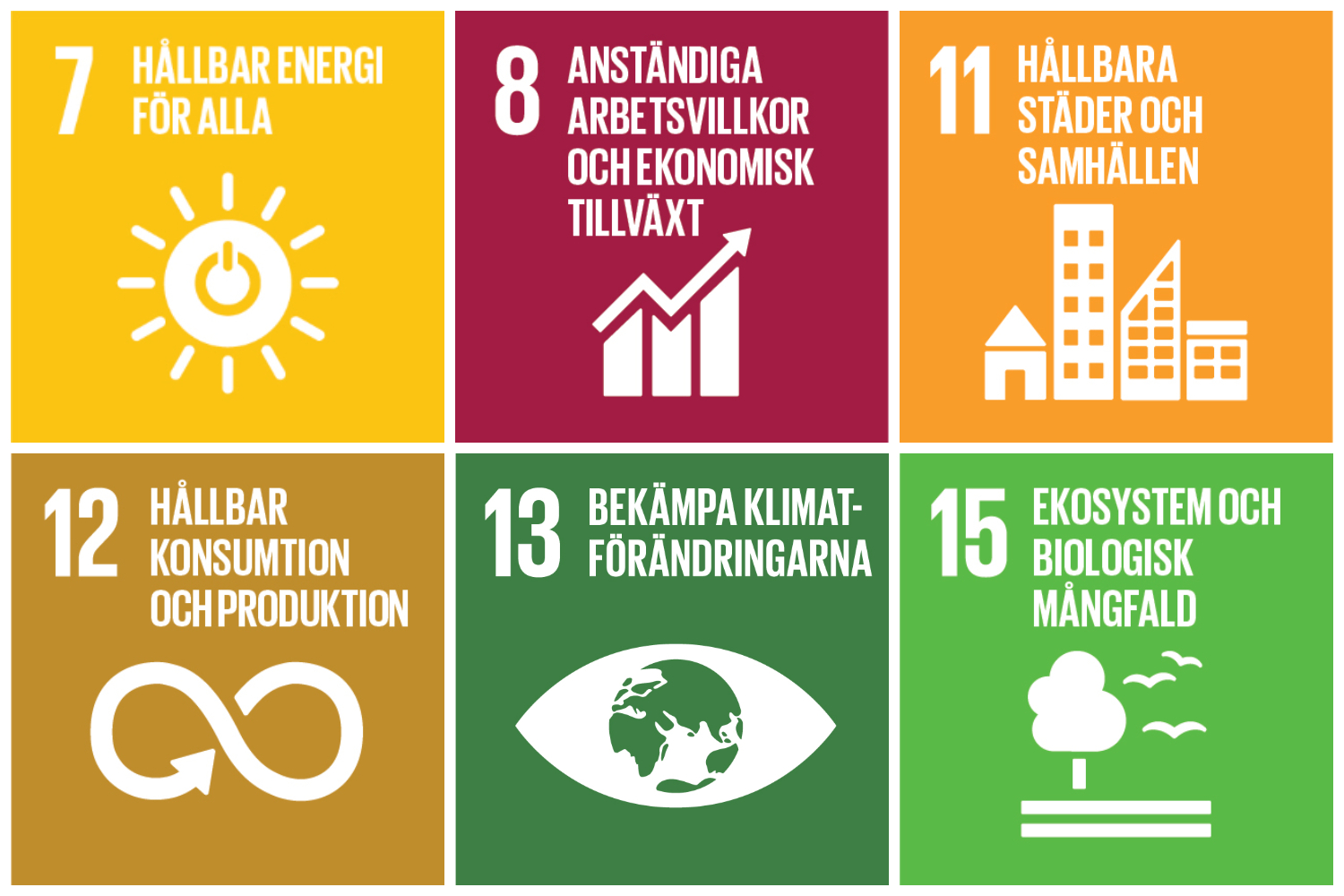We have prioritized among the UN's 17 global sustainability goals and selected six goals where we can contribute the most to sustainable development.
What is Agenda 2030?
A UN summit meeting in 2015 adopted the document Agenda 2030 – for sustainable development. Agenda 2030 is an action plan that points out the challenges that must be met if we are to achieve sustainable development, focusing on eliminating poverty, reducing inequalities and injustice, promoting peace and justice, and resolving the climate crisis. With the help of 17 Global Goals, also called Sustainable Development Goals (SDGs), and 169 SDG targets, Agenda 2030 will guide the work towards a sustainable future. Each country develops its own strategy, and companies have a key role in the work to achieve the Global Goals by 2030.
Our prioritized goals
In 2020, AF Bostäder analyzed the connection between the UN’s Global Goals and our own sustainability-related operational goals. We prioritized six Global Goals in which AF Bostäder can contribute to sustainable development.
Target 7.3: By 2030, double the global rate of improvement in energy efficiency
Properties consume a considerable amount of energy and AF Bostäder is therefore working in a target-oriented way to improve energy efficiency. AF Bostäder has a target to reduce energy consumption measured in kW h/m2 by 10% by 2024.
Target 8.8: Protect labor rights and promote a safe and secure work environment for all workers
AF Bostäder is to offer a workplace that creates value, based on collective agreements, systematic work environment management, increased health promotion, continuous staff surveys, and professional development. Our target is to get 125 out of 180 points in the Attractive Employer Index (AVI) by 2024.
Target 11.1: By 2030, ensure access for all to adequate, safe, and affordable housing
Our operational concept is to provide affordable and appropriate housing for students. Our goal is to offer housing for an additional 1,000 students between 2020–2024 by expanding our property portfolio.
Target 12.5: By 2030, substantially reduce waste generation through prevention, reduction, recycling, and reuse
Waste arises in several parts of the value chain (new construction, renovations, and management) and from our tenants. AF Bostäder is to minimize the generation of waste and help to increase the tenants’ waste sorting to 60% by 2024. Reuse has a high priority.
Target 13.1: Strengthen resilience against climate-related hazards
AF Bostäder has a considerable negative climate effect due to emissions of greenhouse gases from new construction and management. Since March 2023 we have a new goal focusing on emissions, read more under Sustainable operational targets. In new construction, we include green spaces, sedum roofs, and buffering capacity for urban runoff to prevent flooding.
Target 15.5: Reduce the degradation of natural habitats and halt the loss of biodiversity
New student housing is built mainly on already impervious surfaces. Existing greenery is preserved where possible, and if required, sedum roofs are built. To ensure sustainable materials, pressure-impregnated timber is avoided. Swedish pine is prioritized for construction timber. In new construction, certifications such as BASTA, SundaHus, Miljöbyggnad or Svanen are used.
